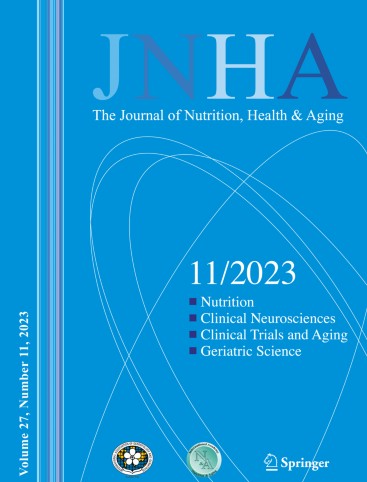Association between sarcopenia index and the risk of second hip fracture in older adults
IF 4
3区 医学
Q1 GERIATRICS & GERONTOLOGY
引用次数: 0
Abstract
Background
The sarcopenia index (SI), calculated as the ratio of serum creatinine to cystatin C level, represents skeletal muscle mass and strength. This study aimed to investigate the association between SI and the risk of second hip fractures, considering various demographic and clinical factors to improve second hip fracture risk prediction.
Methods
This prospective cohort study included older adults with low-energy hip fractures who were monitored for at least two years to track the incidence of subsequent hip fractures. Baseline demographic, clinical, and biochemical data were collected. The SI was calculated as serum creatinine [mg/dL]/cystatin C [mg/L]) × 100. Logistic regression models were used to evaluate the relationship between the SI and the risk of a second hip fracture. Subgroup analyses were conducted to assess the effects of potential modifiers, including gender, body mass index, hypertension, diabetes, and estimated glomerular filtration rate. Receiver operating characteristic (ROC) curve analysis was conducted to evaluate the predictive performance of SI.
Results
A total of 637 patients were included, 59 of whom experienced a second hip fracture during the follow-up period. The patients with second hip fracture exhibited significantly lower SI levels than those without (48.93 ± 8.54 versus 62.95 ± 14.39, P < 0.001). Logistic regression analysis revealed a significant association between a lower muscle-reduction index and an increased risk of a second hip fracture in the fully adjusted model (odds ratio: 0.91; 95% confidence interval: 0.87–0.94; P < 0.001). The area under the ROC curve for predicting a second hip fracture based on the SI was 0.822, indicating good predictive accuracy. Furthermore, subgroup analyses revealed that SI was inversely associated with second hip fracture.
Conclusions
The SI serves as a significant predictor of second hip fractures in older adults, even after considering age, gender, and clinical factors.
老年人肌肉减少症指数与髋部二次骨折风险之间的关系
骨骼肌减少指数(SI)以血清肌酐与胱抑素C水平之比计算,代表骨骼肌质量和力量。本研究旨在探讨SI与第二次髋部骨折风险之间的关系,考虑各种人口统计学和临床因素,以提高第二次髋部骨折的风险预测。方法:这项前瞻性队列研究纳入了患有低能量髋部骨折的老年人,对他们进行了至少两年的监测,以追踪随后髋部骨折的发生率。收集基线人口统计学、临床和生化数据。SI计算为血清肌酐[mg/dL]/胱抑素C [mg/L]) × 100。Logistic回归模型用于评估SI与第二次髋部骨折风险之间的关系。进行亚组分析以评估潜在调节剂的影响,包括性别、体重指数、高血压、糖尿病和估计的肾小球滤过率。采用受试者工作特征(ROC)曲线分析评价SI的预测效果。结果共纳入637例患者,其中59例在随访期间发生第二次髋部骨折。第二次髋部骨折患者的SI水平明显低于未骨折患者(48.93±8.54比62.95±14.39,P <;0.001)。Logistic回归分析显示,在完全调整模型中,较低的肌肉减少指数与第二次髋部骨折风险增加之间存在显著关联(优势比:0.91;95%置信区间:0.87-0.94;P & lt;0.001)。基于SI预测第二次髋部骨折的ROC曲线下面积为0.822,表明预测精度较好。此外,亚组分析显示SI与第二次髋部骨折呈负相关。结论:即使考虑了年龄、性别和临床因素,SI仍可作为老年人第二次髋部骨折的重要预测指标。
本文章由计算机程序翻译,如有差异,请以英文原文为准。
求助全文
约1分钟内获得全文
求助全文
来源期刊
CiteScore
7.80
自引率
3.40%
发文量
136
审稿时长
4-8 weeks
期刊介绍:
There is increasing scientific and clinical interest in the interactions of nutrition and health as part of the aging process. This interest is due to the important role that nutrition plays throughout the life span. This role affects the growth and development of the body during childhood, affects the risk of acute and chronic diseases, the maintenance of physiological processes and the biological process of aging. A major aim of "The Journal of Nutrition, Health & Aging" is to contribute to the improvement of knowledge regarding the relationships between nutrition and the aging process from birth to old age.

 求助内容:
求助内容: 应助结果提醒方式:
应助结果提醒方式:


